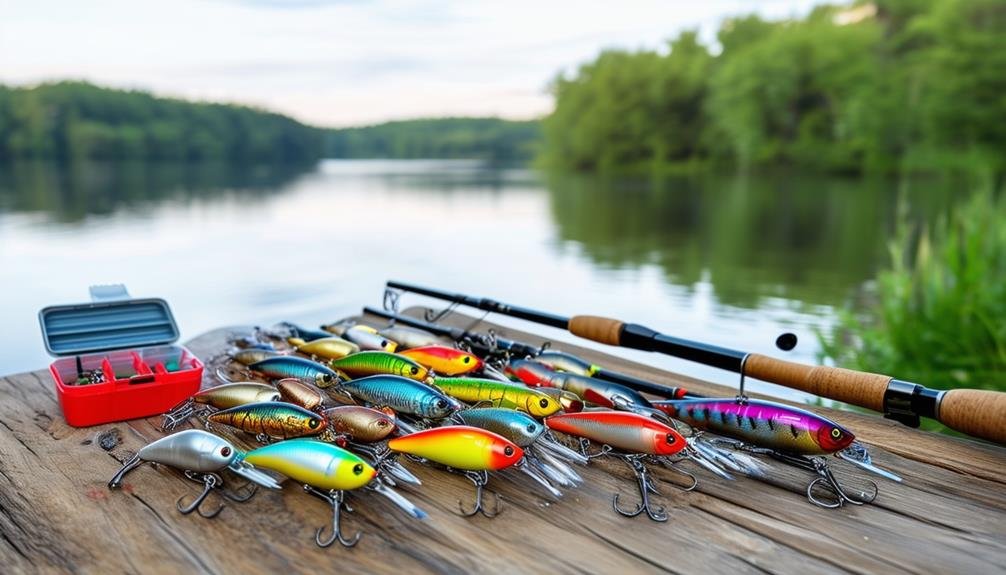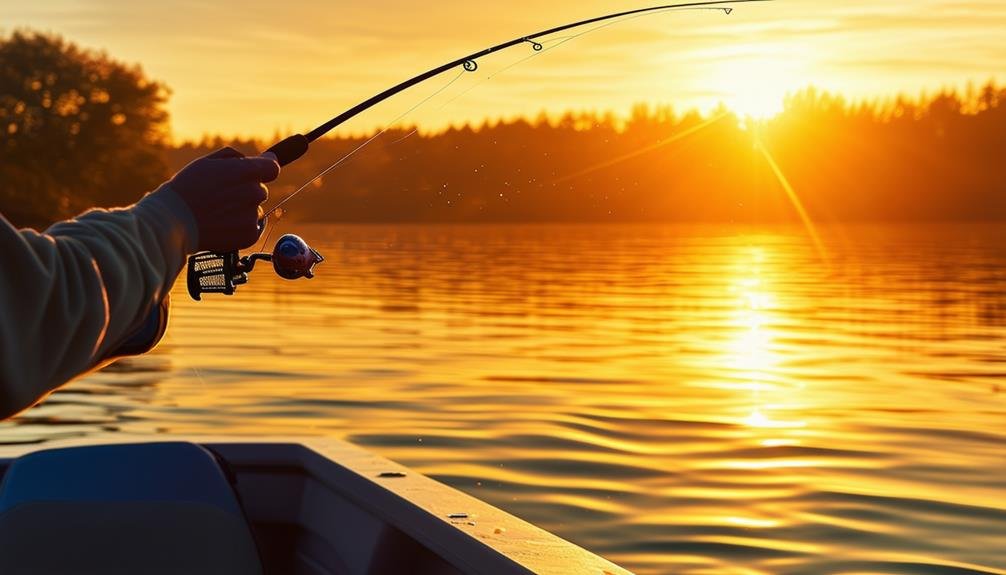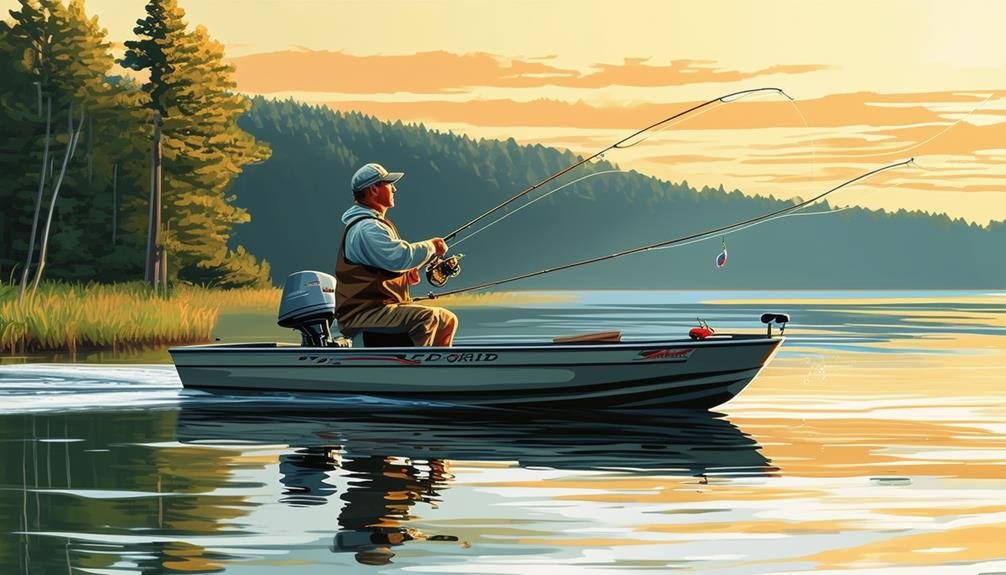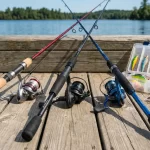What’s stopping you from catching huge bass like a pro?
You want to catch big fish. You’re tired of reeling in small ones and feeling frustrated.
It is so hard not knowing what the right lure or technique is, especially when it comes down to crankbaits which seem too complicated with all their different shapes, weights and action types (e.g., diver baithook minnow style lures that dive deep below water level).
You miss out on so many fish because your chosen bait doesn’t have a great design or is used in such an awkward way to start making them jump up. With crankbaits, if you use it badly – they might just laugh at you as though laughing with their own mouth open underwater.
To give yourself the confidence of being one who can catch monster bass easily and naturally by using a lure which has been known to capture monstrous fish for so many years.
You have got nothing but gain when following simple crankbait fishing tips I would like you share in order make catching these big boys at ease, fun with success guaranteed.
Sounds good? Let’s dive right into it!
Choosing the Right Crankbait for Different Fishing Conditions

Using the right crankbait can make all the difference in landing bass. This article will break down how to choose a good one.
Water clarity plays a role in deciding what type of crankbait to use.
When fishing in clear water, you’ll want to go for smaller baits and bright colors that imitate baitfish or shad. For murky waters though, larger lures with duller finishes are the way to go.
For example: If your bass will be able to see it all too clearly because of clean water clarity then using a shiny lure won’t do you any favors.
On the other hand in dark and dirty water bass don’t have much choice but rely on their sense of smell so they prefer duller lures.
The size is another key factor when deciding what crankbait to use.
A larger lure will get the attention of a big fish, while smaller ones might catch you some more bass in shallower waters.
For example: If fishing for monster bass then an 1-2 oz jigging spoon would be the perfect size.
For shallow water though, lures that are under one ounce may give better results as they’re less likely to get caught on submerged weeds.
Understanding Crankbait Depth Control

Mastering crankbait depth control is essential for successfully luring monster bass. Here’s what you need to know:
Crankbait Sizing:
- Choose a bait that matches your target water conditions (e.g., large baits in deep waters, smaller ones in shallow areas).
- Select the right size based on water depth and lure choice.
Retrieve Speed Control:
- Varying retrieve speed to create different actions (quick pull imitating fleeing baitfish or slower drag simulating injured prey).
- Controlling your retrieval pace affects the crankbait’s ability to trigger bass strikes.
Best Techniques for Presenting Your Lure on Top or Underwater Structure

Using crankbaits can be an effective way to catch bass. But, in order to make it successful, you need a solid plan for presenting your lure.
You have to consider where the bass are hiding and what they’re eating when deciding whether to fish on top or under structure with cranked lures.
If bass are at a place like rocky shorelines that provide food, using crankbaits is perfect. These locations have plenty of baitfish for bass to target.
In contrast if you find your self in water that’s full of weeds then an alternative presentation method such as cranking near or into the structure will work best.
There are different types of lures suitable for various depths and situations, so choosing one can be crucial.
If you’re fishing shallower waters a shallow crankbait works great.
However in areas with deeper water where bass tend to hide the use of deep diving cranks or even an extremely loud cranking sound will work best for getting their attention.
Setting Up a Presentation and Reeling in the Catch

Using crankbaits can be an effective way to catch bass, but you need to get it right. Here are some key things to consider.
Crankbait Selection:
- Choose a lure that mimics the local baitfish
- Select lures with the correct size and action (fast or slow) based on water conditions
Presentation is Key:
- Vary your retrieve speed to mimic prey movement
- Pay attention to rod angle, as this affects lure depth and visibility.
How to Read the Water and Adjust Your Crankbait Game Plan?
Crankbaits can be an effective way to catch monster bass when you know how to use them.
To start off, you need to understand what your crankbait’s depth range is. This is where knowing about water conditions will come in handy.
For example if the lake or body of water you’re fishing has a lot of vegetation it might be best for using smaller crankbaits with shallower diving capabilities so that you can reach your target zone without getting hung up.
On the other hand, open waters with no structures will have less risk involved and thus allow you to use larger lures that dive deeper.
You’ll also need to pay attention to the rate at which your crankbait’s moving through water. The speed in which it moves can determine how attractive the bait is.
For example, when using a lure with a lot of action and movement like an X-rap or a Bombers you may want to use the faster retrieval method as this makes it more likely for bass to strike out at your crankbait.
On the other hand lures that are less lively require slower speeds to get the desired effect from them in water.
Conclusion: The Right Crankbait Choice Can Make All the Difference
The battle of wits is done, and if you’re not already victorious then don’t bother trying.
After all that’s been said about crankbaits as well as techniques for using them in the water to lure monster bass it becomes clear: some anglers will become great fishermen.
With this newfound knowledge, any serious fisherman is able to choose the best equipment and present a convincing case with their presentation on top or under structure so that they can reel in big bass.
There are just not enough hours of sun time available for me. The truth hurts; every angler still has limitations (equipment, finances) but these may be overcomed by your determination to do things differently this coming year.
Go on now and make some money while trying with the tips you got today or even sell them off – a new business might take hold.







